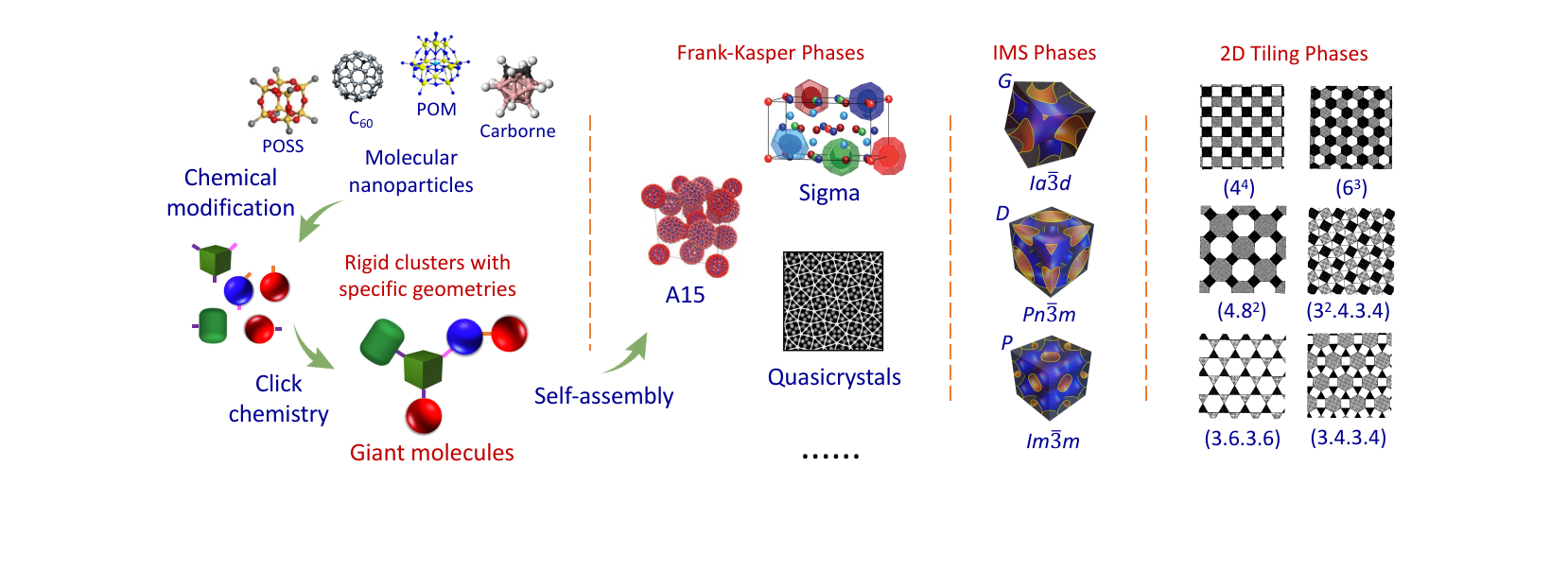Quotes
在科学上没有平坦的大道,只有那些不畏艰险沿着陡峭山路攀登的人,才有希望达到光辉的顶点。
----马克思
-----------------------------------------------
Research Projects
Collaborations
请有兴趣的研究组联系我们。欢迎任何形式的合作,尤其是在自组装、水凝胶以及生物医药等方向的合作。
------------------------------------------
Publications
Lin, Z.; Lu, P.; Hsu, C.-H.; Sun, J.; Zhou, Y.; Huang, M.; Yue, K.; Ni, B.; Dong, X.-H.; Li, X.; Zhang, W.-B.;* Yu, X.;* Cheng, S.Z.D.* Hydrogen Bonding Induced Nanophase Separation in Giant Surfactants Consisting of Hydrophilic [60]Fullerene Tethered to Block Copolymers at Different Locations. Macromolecules 2015, 55, 5496-5503. [Link] [PDF]

Abstract
Phase behaviors of two series of giant surfactants consisting of a hydrophilic [60]fullerene (AC60) molecular nanoparticle (MNP) tethered to a polystyrene-block-poly(ethylene oxide) (PS-b-PEO) block copolymer were investigated. The physical location of AC60 MNP was specifically designed to be at the end of the PS block (AC60-PS-PEO) or at the junction point [PS-(AC60)-PEO] between the PS and PEO blocks. Self-assemblies of these two series of giant surfactants in the bulk revealed that the incorporation of AC60 MNPs leads to nanophase separation of originally disordered PS-b-PEO block copolymers having their block lengths shorter than the limiting value for the nanophase separation in the PS-b-PEO precursors. Based on small-angle X-ray scattering and transmission electron microscopy results, three ordered nanostructures were observed in these two series of giant surfactants, including lamellae, double gyroids, and cylinders, all of which possess domain sizes smaller than 10 nm. Two pairs of topological isomers, AC60-PS50-PEO45 and PS50-(AC60)-PEO45 as well as AC60-PS78-PEO45 and PS78-(AC60)-PEO45, were explicitly investigated to reveal the topological effect on self-assembly behaviors of these giant surfactants. The results provided evidence of the physical location and distribution of the AC60 MNPs within the nanophase-separated domains and demonstrated abilities to stabilize the different structures via topological variations. This study thus affords an efficient and practical strategy for the design and preparation of giant surfactants to construct ordered nanostructures for technologically relevant applications.






